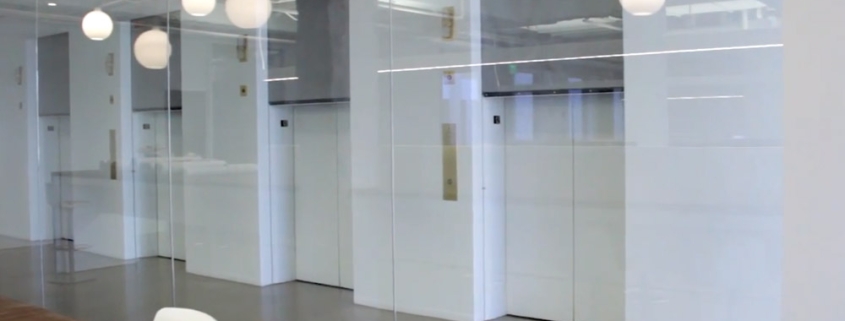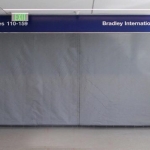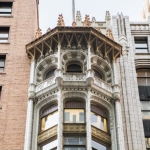Elevator Smoke Curtains FAQs
Elevator smoke curtains have gained significant attention as crucial safety devices in high-rise buildings. These curtains contain smoke and prevent its spread during a fire, providing valuable time for evacuation and fire suppression. Understanding the code requirements for elevator smoke curtains is essential in building design and maintenance, ensuring both safety and regulatory compliance.
What Are Elevator Smoke Curtains?
In the event of a fire, flexible smoke curtains can be deployed to effectively seal off elevator shafts and prevent the spread of smoke and heat through the elevator doors. Elevator shafts often act as chimneys, allowing smoke to rapidly rise through a building during a fire. This dangerous vertical migration of smoke can be significantly reduced by deploying a smoke curtain.
Are Elevator Smoke Curtains Required?
In commercial buildings, smoke and fire curtains are crucial, particularly around elevator entrances. Their main function is to confine fires and stop smoke from traveling to other floors, thereby saving lives. Commonly installed in elevator shafts – which can behave like chimneys in high-rise structures – these smoke curtains effectively block the spread of smoke.
How Do Elevator Smoke Curtains Work?
Smoke curtains automatically deploy when fire or smoke is detected, creating a physical barrier that prevents smoke from spreading and cutting off the fire’s oxygen supply. Despite their critical functionality, these curtains are designed to blend discreetly with architectural aesthetics until activated.
What’s the Difference Between Smoke and Fire Curtains?
There are two distinct types of fire safety curtains: smoke and fire curtains. Smoke curtains are specifically designed to block the spread of smoke and guide it out of hazardous areas. They meet UL 1784 Standard for Air Leakage Tests of Door Assemblies and Other Opening Protectives and can withstand temperatures up to 400°F.
In contrast, fire curtains act as physical barriers to prevent flames from spreading further, possessing a fire-resistance rating of up to 3 hours and being able to withstand temperatures of over 2000° F. Fire Curtains should be tested to UL 10B Standard for Fire Tests of Door Assemblies to be acceptance in a fire rated wall.
What are the Code Requirements for Smoke Curtains?
The International Building Code (IBC) in Chapter 30 for Elevators and Conveying Systems outlines the conditions that require hoistway opening protection for elevator shafts connecting more than three stories as indicated in 3006.2.
These conditions include:
- Buildings not protected with an IBC-compliant automatic sprinkler system.
- Shafts exceeding 75 feet in height from the lowest to the highest floor.
- Buildings or portions used for institutional purposes where occupants require assistance or supervision, such as healthcare facilities and detention centers.
Hoistway coverings
The model building codes provide several exceptions to the standard hoistway and shaft protection requirements. Hoistway coverings are not mandatory if the elevator hoistway serves only open parking garages.
Similarly, shaft opening protection is unnecessary at exit discharge levels with compliant automatic sprinkler systems. Additionally, elevator lobbies and hoistway protection are not required on floors where the hoistway opens directly to the exterior.
The National Fire Protection Association (NFPA) has numerous standards related to hoistway closures. For instance, NFPA 105 Standard for Smoke Door Assemblies and Other Opening Protectives includes Chapter 9, which focuses on Smoke-Protective Curtain Assemblies for Hoistways and provides guidance on mounting, assembly, power requirements, installation, inspection, testing, and maintenance.
Testing
Testing must be conducted by a qualified individual who inspects for any damaged, modified, or missing components that could pose a hazard. Smoke curtains require a closing rate between 6 and 24 inches per second, and they must be installed per the manufacturer’s instructions and the ASME A17.1 Safety Code for Elevators and Escalators.
Post-installation, the curtains undergo operational and drop testing, which a witness must sign off on and provide to the (AHJ) authority having jurisdiction for the life of the installation. Annual drop and operational testing, as well as yearly visual inspections, are also mandated.
The building owner or property manager is responsible for all required maintenance and repairs, ensuring they are completed promptly by qualified personnel.
Can Smoke Curtains Be Added to Existing Elevators?
Retrofitting elevator smoke curtains in commercial buildings offers property owners several advantages in meeting current building code standards, such as the requirements outlined in the International Building Code Section 3006.



